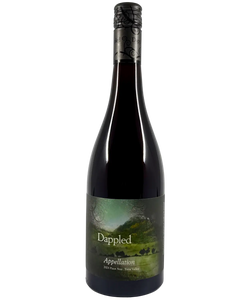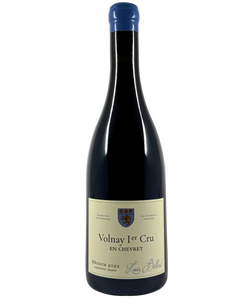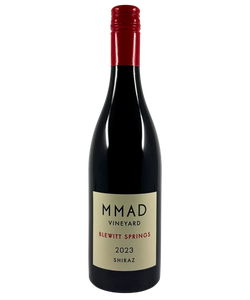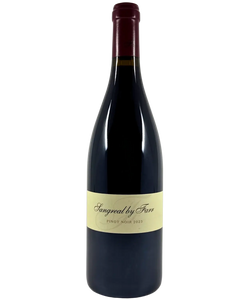Each year, The Standish Wine Company drops four single-vineyard Shiraz wines. All from the Barossa zone. All aged in oak. All using a portion of whole bunch fermentation. And yet — every wine is wildly different.
Here’s your breakdown of the 2023 release. What sets them apart, how whole bunch fermentation plays a role, and why this line-up is a masterclass in terroir and technique.
The 2023 line-up
Lamella (Eden Valley)
The only wine in the line-up from Eden Valley — a higher altitude sub-region within the Barossa zone. Elevation acts as a natural cooling influence, slowing ripening and helping the grapes retain acidity. That gives Lamella its freshness, structure, and brightness — it drinks more like a cool-climate Shiraz than a big Barossa blockbuster.
- 100% whole bunch
- Not yet Langton’s Classified, but demand suggests it’s only a matter of time
- Drinking window: starts 2028
Schubert Theorem (Barossa Valley)
Named after the mathematical concept of knot theory (yes, really), this is the brooding, intellectual wine of the line-up. It’s also the only one aged partially in a concrete egg — an inert vessel that enhances fruit purity, balancing the complexity of oak.
- 50% whole bunch
- Mix of oak (oxygen = complexity) and concrete (no oxygen = purity)
- Lush, dark, inky, and spicy
- Langton’s Classified (second growth)
- Drinking window: 2030–2045+
The Standish (Barossa Valley)
This is the flagship. A single-vineyard Shiraz from ancient vines, with structure and power to burn. It sees 45% whole bunch and is built for the long haul.
- 45% whole bunch
- Single vineyard, old vines
- Langton’s Classified (second growth)
- Longest drinking window: 2035–2050
The Relic (Barossa Valley)
The only co-ferment in the line-up, blending Shiraz with a touch of Viognier — a nod to Côte-Rôtie in the Northern Rhône. Viognier brings a floral lift, even though whole bunch inclusion here is just 10%.
- 10% whole bunch
- Includes a small percentage of Viognier for fragrance and finesse
- Langton’s Classified (second growth)
- Drinking window: starts 2026
Whole bunch fermentation: what it is and why it matters
Each wine in the Standish 2023 release uses a portion of whole bunch fermentation. This isn’t just a stylistic choice — it changes how the wine tastes, feels, and ages.
Here’s how it works, and the three main methods:
Carbonic maceration
Whole bunches are sealed in a tank and injected with CO₂ to kickstart fermentation. This occurs inside the grape, at an intracellular level, using the grape’s own sugars and the natural yeast on the skin. The result is lifted aromatics, fine tannins, and juicy fruit character.
Semi-carbonic maceration
No added CO₂. Grapes are piled into a tank, and those on the bottom are crushed under their own weight. That releases juice, which starts fermenting naturally and creates CO₂ — triggering intracellular fermentation in the intact berries above.
Crushed fruit + whole bunches
Rather than waiting for the weight to crush the grapes, the winemaker throws in crushed fruit along with whole bunches. This kicks off semi-carbonic fermentation straight away, blending early juice fermentation with stem inclusion for more complexity and tannin.
The use of whole bunches adds aromatic lift, fine-boned structure, and ageability — especially important in warmer regions like Barossa where fruit ripeness is a given. In the Standish wines, it balances power with finesse.
Terroir, old vines, and the winemaker’s role
Despite being made from the same grape in the same broader region, these wines couldn’t be more distinct — and that’s the point. Dan Standish works with specific vineyard sites and lets the fruit speak. Elevation, soil type, sun exposure, and vine age all shape the wine — and Dan’s use of oak and fermentation style enhances those traits, rather than covering them up.
It’s a lesson in how one grape can tell four different stories when site and technique are thoughtfully combined.
Final sip
This is more than a four-wine release. It’s a masterclass in vineyard expression, winemaking precision, and the kind of Shiraz that can stand toe-to-toe with the world’s best.
Same grape. Same zone. Totally different — and utterly compelling.











